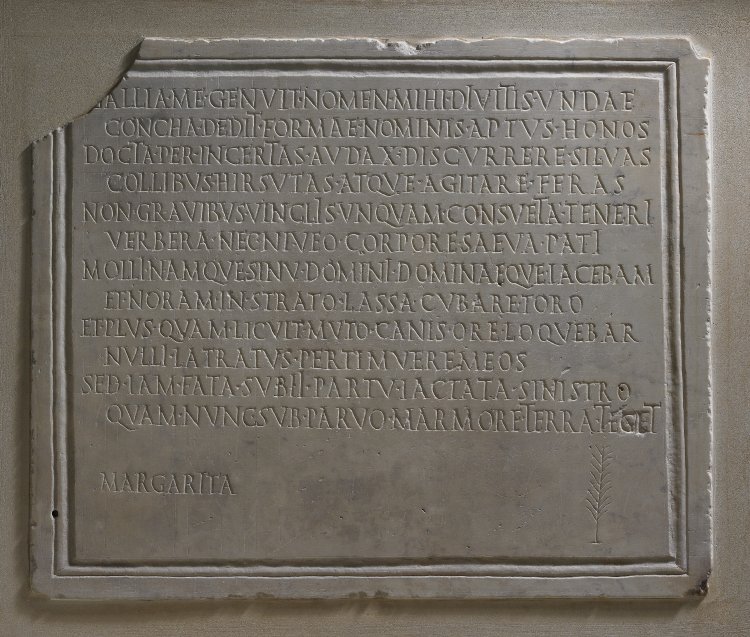
“Gaul gave me my birth and the pearl-oyster from the seas full of treasure my name, an honour fitting to my beauty.
I was trained to run boldly through strange forests
and to hunt out furry wild beasts in the hills
never accustomed to be held by heavy chains
nor endure cruel beatings on my snow-white body.
I used to lie on the soft lap of my master and mistress
and knew to go to bed when tired on my spread mattress
and I did not speak more than allowed as a dog, given a silent mouth
No-one was scared by my barking
but now I have been overcome by death from an ill-fated birth
and earth has covered me beneath this small piece of marble.”
The love of a dog was not a modern invention. This epitaph was written for a dog named “Margarita” (Pearl”) nearly two thousand years ago in ancient Rome. A couple buried their precious white hound, most likely a French breed, during the first or second century, a dog they so loved that they got for her final resting place a fine white marble gravestone on which they engraved the words above. What breeder among us can’t relate to the feelings of loss that Margarita’s owners had upon losing her during a whelping?
The tombstone is now with the British Museum which reports that quite a few tombstones for pet dogs survived from the Roman period, but none as elaborate and detailed as Margarita’s. The epitaph shows Margarita’s importance to her owners through its quality and intellectual content, as several lines were plays on phrases from the most famous and respected Roman authors.
The catalog page for the stone reads,” Looking closely at the inscription, one can still make out the lines that were faintly carved to indicate the height of each row. We can also perceive vertical lines on the left hand side of the slab, up to about a third into it. While at first sight, these could have been laid out to indicate the horizontal spacing of each individual letter, it is quite clear that none of the letters actually respect them. It is more likely that the mason had started to lay out rows on a slab, realized the slab was not wide enough to contain the lines of the poem in an orderly manner, and thus decided to turn that slab 90 degrees.”
